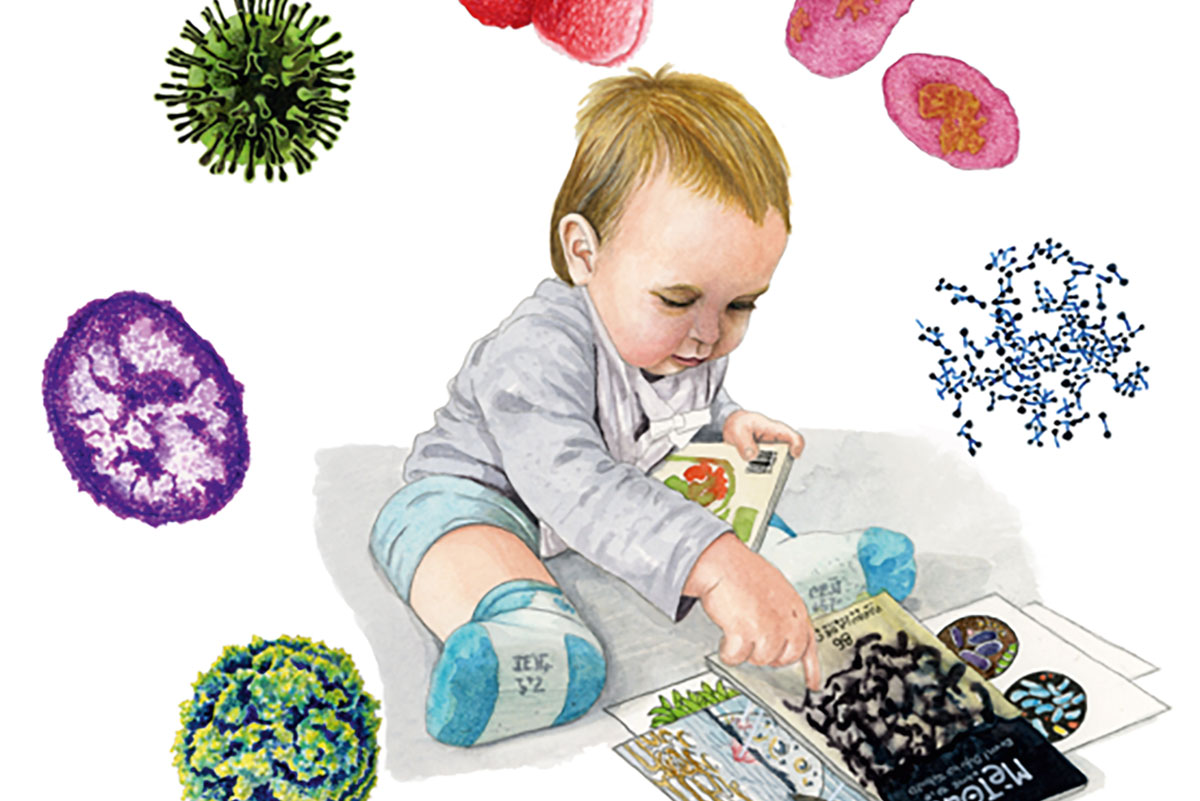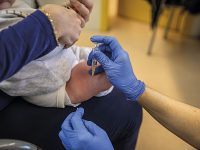
On 27 June 2015, an item of news appeared on the media and spread through social networks: in Olot (north Catalonia), a 6-year-old child had died from diphtheria; it was the first case in Spain since 1987. Why did this happen? Was it because of a new «virus», unknown until then? Was it because a pathogen had mutated and become more dangerous? Is the entire child population in danger? No. What happened was that the child was not vaccinated against this childhood disease, which is well known, which «has kept us company» for millennia. And that can be prevented with an effective vaccine against the bacteria (not a virus) causing it. And it happened that the child was not vaccinated because his parents opposed any kind of vaccination. The child’s classmates got in contact with the bacteria as well, but they did not develop the disease because they were vaccinated.
Currently, diphtheria is considered a rare disease in Europe. It has a low incidence, since 90 to 95 percent of the population is vaccinated against it. Diphtheria is a disease that affects the respiratory system and causes a great difficulty to breathe and asphyxia. When the bacteria (Corynebacterium diphtheriae) multiply in the throat, they secrete a toxin that affects different organs, such as the kidney, the heart and the nervous system, and it can be deadly. The vaccine against diphtheria is administered combined with two others against bacterial diseases: tetanus (Clostridium tetani) and pertussis, or whooping cough, (Bordetella pertussis). In the Catalonia vaccination schedule, the different doses are specified: the first three at 4, 6 and 18 months, another one at 5 years old, and the last one, «a boost», at 16 years old.
«The main reason for the increase in measles outbreaks and other viral and bacterial diseases in Europe has been the result of the opposition to vaccination»
The main reason for the increase in measles outbreaks and other viral and bacterial diseases in Europe has been the result of the opposition to vaccination. Anyone can reject vaccination individually; but this is not advisable. Infectious diseases have caused disasters not only in the past, but still today in many corners of the world. They left marks on history, and they still do, but at least a dreadful disease, smallpox (see Mètode 80), has been eradicated from the planet. Polio (or poliomyelitis, caused by a picornavirus) is a good candidate for upcoming eradication. And in the longer term, measles (caused by a paramyxovirus) could be eradicated, too.
We have three main types of external weapons to control infectious diseases: hygiene (including insect control), vaccination and antimicrobial drugs. And our own body tool: the immune system. In any case, infectious diseases are common and quite widespread. Groups most at risk are children (because it is the first time they get in contact), pregnant women and elderly people.
Children, and especially babies, have an immature immune system and they have not yet acquired the symbiotic microbiota of an adult, which functions as a protective barrier against «invasive» microorganisms. Children are smaller than adults, so they usually suffer a worse reaction against infections because of the dose-effect relationship, since the same quantity of a pathogen spreads in a lower weight. In addition, children are highly vulnerable to biological or chemical agents in aerosols, since they normally breathe more times per minute than grown-ups. As a result, children receive higher doses in the same period of time.
«Even though vaccination is quite widespread, some children are still unprotected»
Prevention is an effective strategy to improve children’s health and protect them against infectious diseases through vaccines, following vaccination schedules, inasmuch as it outstandingly reduces morbidity and mortality. Even though vaccination is quite widespread, some children are still unprotected: newborns, who are too young to be vaccinated, children who have not been vaccinated, children who do not receive all the scheduled vaccines at the right time, or children who have received them but who have not developed the expected immune response. We also have to consider the progressive loss of immunity along the years, as teenagers, adults or at an old age.
Each vaccine immunises specifically against a specific disease. Now more than twenty-five vaccines of systemic application (through public health vaccination programmes) or non-systemic application (individual vaccines) are available to prevent many current transmissible diseases. Among systemic application (especially for children) there are vaccines against bacterial diseases like tetanus, whooping cough, infection by Haemophilus influenzae type B, meningococcus type C (Neisseria meningitidis) and pneumococcus (Streptococcus pneumoniae). These three vaccines have drastically brought down the incidences of child’s bacterial meningitis. Nowadays, we can also add the meningococcal disease type B vaccine (N. meningococcal group B), which is on the market with the name of Bexsero, to the list of vaccines against «controllable» bacterial pathogens; but it is not included in the compulsory vaccination schedule. For the systemic application against viral diseases we have vaccines against polio, hepatitis A and B, measles, rubella, mumps, papillomavirus, chickenpox and influenza (the flu). Besides, there are prepared vaccines for the systemic application for elderly people against the viruses of influenza and hepatitis A, and against pneumococcus.
These are the five key points about vaccines we should not forget:
1. Vaccines are the main tool to prevent most infectious diseases, both viral and bacterial.
2. People vaccinated or immunised against any specific disease indirectly protect those who are not vaccinated. People who have not been vaccinated against some disease are at risk of getting it and passing it on family members, friends and other susceptible people around them.
3. Vaccination, as any medical intervention, may have side-effects in a very small number of cases. Therefore, we should be extra-careful during both the preparation and the administration of vaccines.
4. The side-effects linked to vaccination are usually less dangerous than the disease itself, be it bacterial or viral.
5. There is no scientific evidence indicating that vaccines cause autism or sterility, as stated in some social networks.
«Measles has recently re-emerged in the EU, due to sub-optimal levels of immunised population»
Each vaccine provides immunity against the specific disease for which it has been prepared. When a large enough part of the population is vaccinated, this number of people represents a barrier against the disease transmission. But if the number of vaccinated people does not increase, what increases is the probability of a disease spread among people susceptible to suffer from it. The commitment of all countries in the EU to the WHO to eradicate measles by 2015 at the latest has not been accomplished, according to the latest epidemiological studies. Measles has recently re-emerged in the EU, due to sub-optimal levels of immunised population. In fact, there was a downward trend until 2009, but the number of cases quadrupled in the period 2010-2011. Following the data of vaccination coverage collected by the WHO in the EU, between 2000 and 2010, almost 5 million children from 2 to 12 years old were not vaccinated.
Before the avalanche of migrants, hitting the closed doors of our old and peaceful Europe, we often forget that we are all migrants. Europa («the one with the large eyes», according to her Greek name) was a young princess who was swimming happily in the west Mediterranean sea when a bull abducted her and carried her on its back to the lands we now close. With the amount of people who are poorly nourished and in need of water to drink and wash themselves, old infectious diseases can proliferate and spread again. Microbes do not care about passports or borders. We should be alert to the dangers of infections and take interest in the need for vaccination. We have to watch out so that self-satisfaction of erroneously believing that we have the ultimate control over diseases does not help «abnormal» news – like the one about the child from Olot who died from diphtheria – to become «normal» in television programs and tweets.





